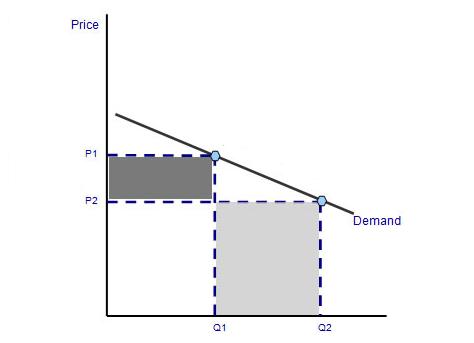The concept of elasticity of demand plays a crucial role in the pricing decisions of the business firms and the Government when it regulates prices. The concept of price elasticity is also important in judging the effect of devaluation of a currency on its export earnings. If has also a great use in fiscal policy because the Finance Ministry has to keep in view the elasticity of demand when it considers to impose taxes on various commodities. We shall explain below the various uses, applications and importance of the elasticity of demand.

Elasticity of demand is mainly useful in Pricing Decisions by Business Firms. The business firms take into account the price elasticity of demand when they take decisions regarding pricing of the goods. This is because change in the price of a product will bring about a change in the quantity demanded depending upon the coefficient of price elasticity. This change in quantity demanded as a result of, say a rise in price by a firm, will affect the total consumer’s expenditure and will therefore, and affect the revenue of the firm. If the demand for a product of the firm happens to be elastic, then any attempt on the part of the firm to raise the price of its product will bring about a fall in its total revenue. Thus, instead of gaining from the increase in price, it will lose if the demand for its product happens to be elastic. On the other hand, if the demand for the product of a firm happens to be inelastic, then the increase in price by it will raise total revenue. Therefore, for fixing a profit maximizing price, the firm cannot ignore the price elasticity of demand for its product.
Price elasticity of demand can be used to answer the following types of questions:
- What will be the effect on sales if a firm decides to raise the price of its product, say by 5 percent?
- How large a reduction in price of a product is required to increase sales, say by 25 percent?
It has been found by some empirical studies that business firms often fail to take elasticity into account while taking decisions regarding prices, or they give insufficient attention to the coefficient of price elasticity. No doubt, the main reason for this is that they don’t have means to calculate price elasticity for their product, since sufficient data regarding past prices and quantity demanded at those prices are not available. Even if such data are available, there are difficulties of interpretation of it because it is not clear whether the changes in quantity demanded were the result of changes in price alone or changes in some other factors determining the demand.
However, recently big corporate business firms have established their research departments which estimate the coefficient of price elasticity from the data concerning past prices and quantities demanded. Further, they are also using statistical techniques to isolate the price effect of the quantity demanded from the effects of other factors.